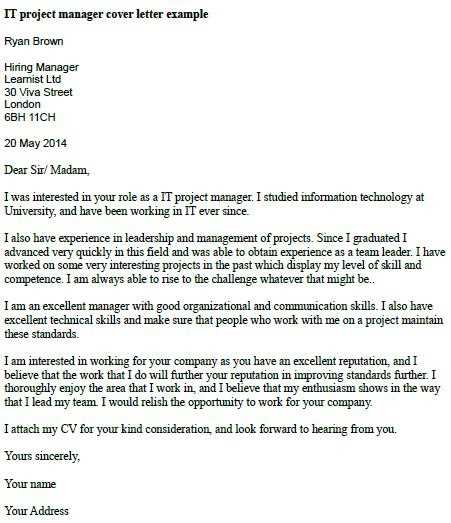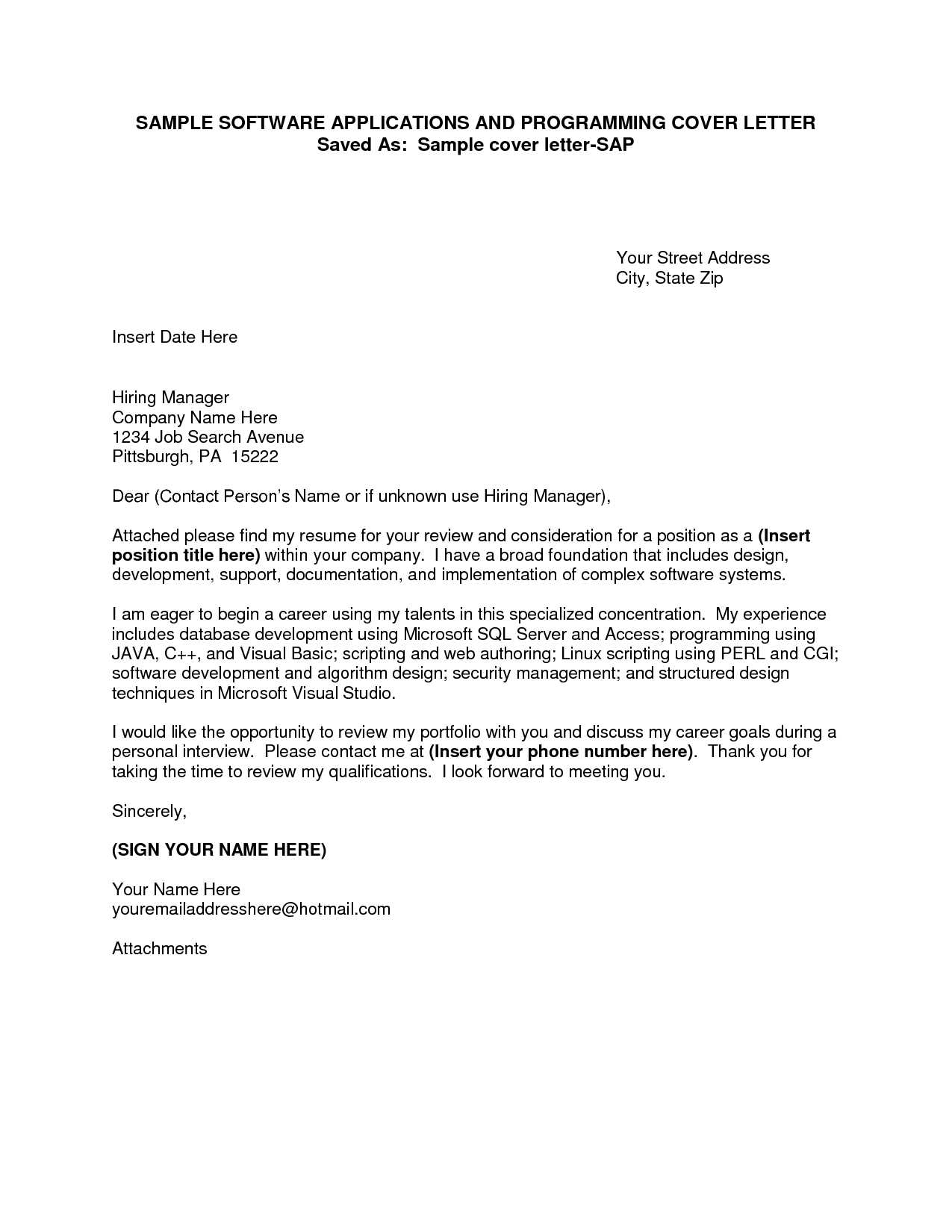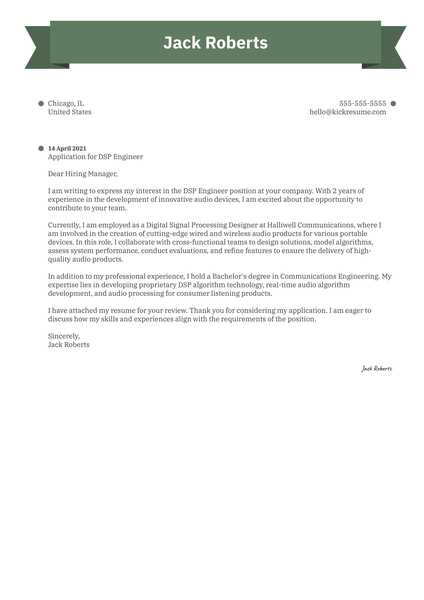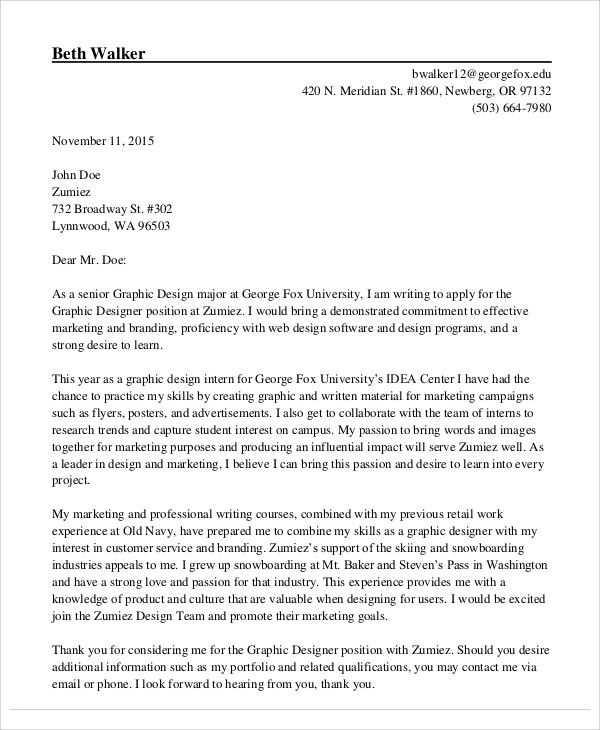Cover Letter Template Without Hiring Manager Name

When applying for a position, it’s common to face situations where the contact person’s details are unavailable. In these cases, it’s important to maintain a professional tone while addressing the organization. Crafting a well-structured message that conveys your qualifications and enthusiasm can still make a strong impression, even without addressing a specific individual.
Customizing your approach is key in this scenario. Instead of focusing on the lack of a direct connection, concentrate on highlighting your skills and interest in the company’s goals. Tailor your content to emphasize how your experience aligns with the role, ensuring that your message remains relevant and compelling.
By following a clear and effective format, you can ensure that your application stands out and showcases your professionalism, regardless of whether you know the recipient’s details. Emphasizing your expertise and understanding of the company’s needs will demonstrate your ability to contribute, making your submission impactful and memorable.
How to Write a Generic Application

Writing an application without a direct contact person requires a slightly different approach. Instead of focusing on addressing a specific individual, your goal should be to create a professional and compelling message that conveys your interest and qualifications. A strong application should emphasize your skills, experience, and enthusiasm for the opportunity, ensuring it appeals to the organization as a whole.
The introduction should be engaging and professional, briefly explaining your interest in the position and the company. Following this, highlight your relevant skills and experiences, aligning them with the requirements of the role. This helps demonstrate how you can contribute to the organization’s goals without the need for direct personal contact.
Conclude by expressing your eagerness to discuss your application further, showing that you’re motivated and ready to contribute to the team. Even without knowing the recipient’s identity, your application can still stand out by focusing on what you bring to the role and your understanding of the company’s needs.
Using a Professional Salutation Effectively
Choosing the right greeting in your application plays a vital role in setting the tone for the rest of your message. When the recipient’s identity is unknown, it’s essential to strike a balance between formality and warmth, ensuring your opening conveys respect while maintaining a professional stance. The key is to avoid generic or overly casual greetings, opting instead for ones that reflect professionalism and seriousness.
Below is a table outlining some of the most appropriate salutations to use when you do not have a specific name to address:
| Salutation | When to Use |
|---|---|
| Dear Hiring Team | When addressing a group or team responsible for recruitment. |
| To Whom It May Concern | For formal applications when no contact person is available. |
| Dear [Company Name] Team | When applying to a specific company but no individual is named. |
| Dear Recruiting Department | When reaching out to the recruitment team directly. |
Each salutation conveys professionalism while accommodating the absence of a specific contact person. By using these greetings, you can ensure your application starts off on the right note, showing that you understand the importance of addressing the organization appropriately.
Customizing Your Application for Any Role
When applying for a position, tailoring your message to align with the specific responsibilities and expectations of the role is essential. A generic approach can fail to capture the attention of the reader, so it’s crucial to emphasize how your unique skills and experiences are a perfect match for the job at hand. Customization is not just about inserting keywords–it’s about demonstrating your genuine interest in the company and the value you can bring to their team.
Highlight Relevant Skills and Experiences

Focus on showcasing the abilities and qualifications most relevant to the position. For instance, if the role requires strong communication skills, emphasize your experience in writing or public speaking. Show how your background can help address the company’s needs and drive its success. This level of attention to detail can make your application stand out from the rest.
Demonstrate Knowledge of the Company

Alongside personal qualifications, it’s important to convey that you understand the company’s goals and culture. Research the organization’s mission and values, and incorporate this knowledge into your application. This shows that you’ve taken the time to understand what they do, and are not simply sending out a standard submission.
Highlighting Skills Without Specific Contact
When applying for a position without knowing the individual responsible for reviewing applications, it’s essential to focus on showcasing your key skills and experiences in a way that resonates with the company as a whole. Rather than tailoring your message to a specific person, emphasize your qualifications in a manner that is relevant to the role and organization, ensuring that your abilities stand out to any reader.
Highlighting your skills effectively means aligning them with the requirements of the job. For example, if the position demands leadership qualities, demonstrate your ability to manage teams or projects. By framing your qualifications in this way, you make it clear how you can contribute, regardless of the recipient’s identity.
Additionally, framing your experience in the context of the company’s goals can help ensure that your skills are perceived as valuable. Even without a direct contact, this approach helps communicate your potential impact and establishes your expertise as directly applicable to the company’s needs.
Common Mistakes to Avoid in Your Application
When crafting your application, it’s easy to overlook certain details that can affect how your submission is perceived. Avoiding common mistakes can significantly improve the chances of your message standing out in a competitive pool of applicants. These errors, whether in tone, structure, or content, can detract from the professionalism of your submission and reduce its effectiveness.
One of the most frequent mistakes is using a generic or overly casual greeting. Without a specific person to address, it’s tempting to rely on impersonal phrases, but opting for a more formal and respectful salutation can make a stronger first impression. Additionally, failing to customize the content of your application to align with the role can leave a negative impression, as it may appear you’re sending out the same submission to multiple organizations.
Another common pitfall is neglecting to proofread your text. Spelling, grammar, and punctuation errors can undermine your credibility and attention to detail. A polished and carefully written message shows professionalism and respect for the reader’s time, making your application more likely to receive serious consideration.
When to Use a Template for Job Applications
Utilizing a pre-structured format for your application can be a useful tool in ensuring consistency and professionalism in your submissions. However, it’s important to understand when using such a format is most effective and when it may hinder your chances of standing out. A well-chosen approach can save time and effort, but it should still allow room for customization and personalization to match the specific role.
When to Use a Format
- If you are applying for multiple positions with similar requirements.
- When you need to quickly submit a professional application without focusing on formatting.
- If you’re applying to a job in a well-structured industry where standard formats are preferred.
When to Avoid a Pre-Structured Approach
- If the company values creative or unique approaches, where a personalized submission would be more appreciated.
- When you have specific details to highlight that a rigid format may limit.
- If you know the role requires a highly tailored message to stand out in a competitive field.
Using a structured format is helpful for efficiency, but make sure it’s flexible enough to be adapted to each specific opportunity you pursue. The key is balancing ease with relevance, ensuring that your skills and experiences shine through in the most impactful way possible.
Building Confidence Without Personal Information
Expressing your skills and achievements confidently is essential when presenting yourself to potential employers. However, this confidence can be achieved even without including specific personal details such as direct contacts. The key is to focus on the strengths and experiences that demonstrate your value, highlighting your professional background and abilities in a way that captures attention and leaves a lasting impression.
By emphasizing your accomplishments, qualifications, and enthusiasm for the role, you can establish a strong presence. Focus on relevant experiences that showcase your capacity to succeed in the position. For example, discuss how your skills have led to tangible results in previous roles, or how you’ve successfully overcome challenges.
Confidence is about conviction in your abilities. Even without knowing who exactly will be reviewing your submission, you can communicate your readiness to contribute. Tailor your language to demonstrate enthusiasm for the opportunity while maintaining a professional tone that speaks to your qualifications rather than the personal connection. This approach fosters confidence and shows a potential employer that you are serious and capable.